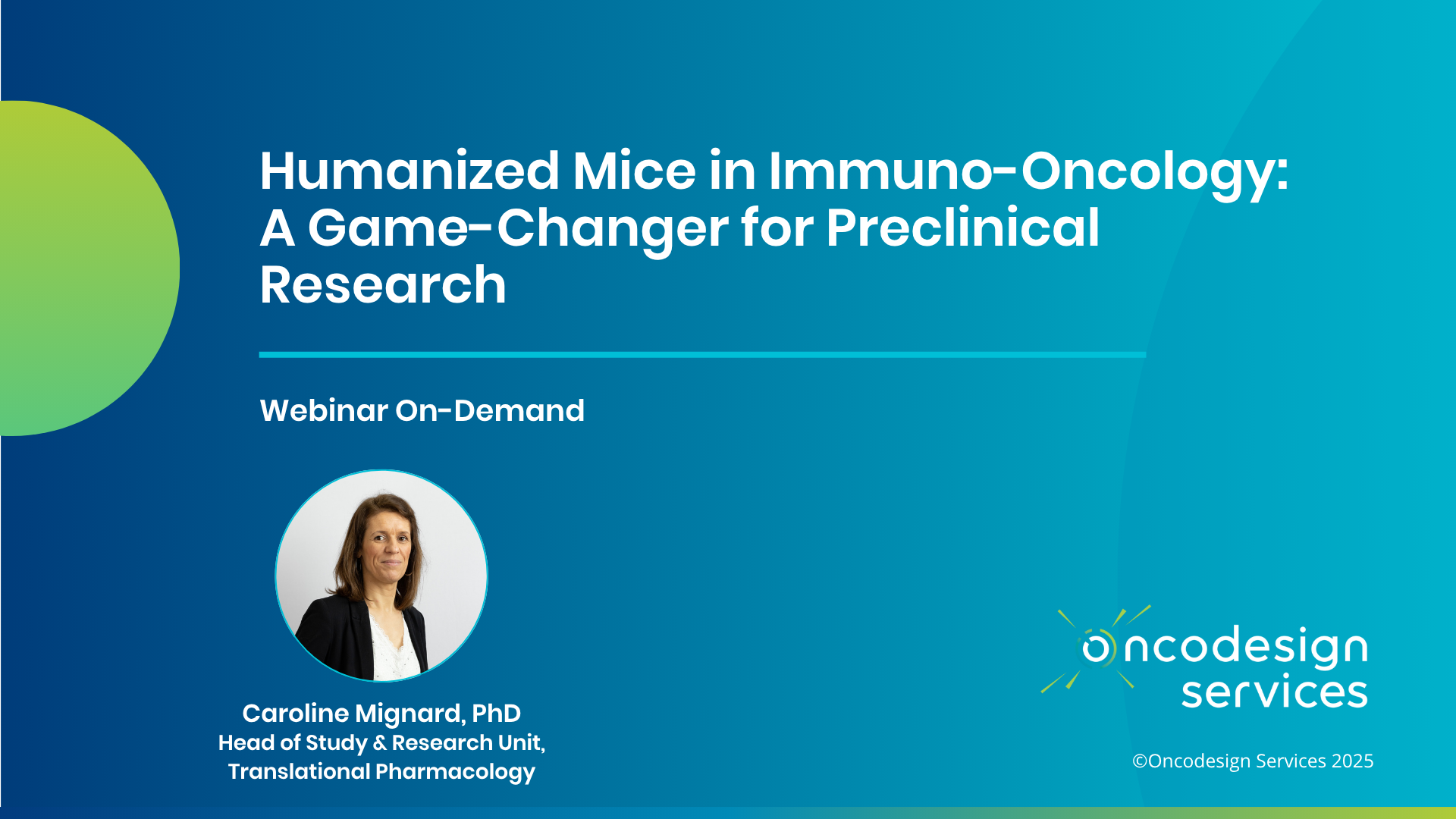


Explore how mice reconstituted with human immune cells are a tool for evaluation of immuno-agents
Immune cells within the tumor microenvironment are now well recognized as to be targets of interest for cancer treatment. Many findings from conventional animal models do not apply to humans due to the intrinsic differences between species. This fact would explain the large need for humanized mouse models that will accurately support the pre-clinical development of such therapeutic approaches.
Human immune system should be reconstituted in immunodeficient mice using either human PBMCs or hematopoietic stem cells (HSCs). So called “Humanized” mouse models, have been established to study the complex interaction of the human immune system during human disorders, when the syngeneic mouse model cannot constitute the test model. Humanized immunodeficient mice, bearing human immune cells with human target tumor cells, are relevant models to test various therapeutic strategies (e.g. antibody dependent cell cytotoxicity, Treg targeting antibodies, TLR agonists, vaccines, adoptive T cells transfer, …) in oncology.
Growth characteristics of human tumors models on humanized mice will be presented either as subcutaneous or as disseminated intravenous models. Randomization parameters were selected regarding both tumor and immune cell sides. Required readouts to understand immune cell modulation and related antitumor efficacy will be described.
The webinar includes illustrative data and case study examples highlighting how these models are applied in immune-oncology preclinical research.
View this webinar to learn about humanized mouse models, and understand from concrete examples of how these models are being used in preclinical studies for evaluation of drug candidates in immune-oncology.
Learning objectives:
- Explore the applications of humanized mouse models in oncology research
- Gain insights into choosing appropriate models for immuno-oncology studies
- Examine methodologies for using in vivo models to study immune cell interactions with therapeutic molecules

